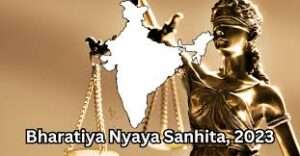
This article has been written by Sanju Jha pursuing Ba. Llb from Rnb Global University, Bikaner

Introduction
According to H.S. CUNNING – ‘Probation is a matter of discipline and treatment. It is a conditional release of an offender under supervision as corrective measures.’
The object of Criminal Law is more inclined towards the reformation of the offender than to punish him. Instead of keeping an accused with hardened criminals in prison, the court can order personal freedom on the promise of good behaviour and can also order a period of supervision over an offender. This is the concept behind ‘probation’. Black’s law dictionary defines ‘probation’ as ‘allowing a person convicted of some minor offence (particularly juvenile offenders) to go at large, under a suspension of sentence, during good behaviour, and generally under the supervision or guardianship of a ‘probation officer’.
Thus, instead of keeping the accused with hardened criminals in jail, the court may order personal freedom on the basis of good behaviour. The court can also grant a supervision period for the accused. The main aim behind the Probation of Offenders Act, of 1958 is to give an opportunity to offenders to reform themselves rather than turning into hardened criminals. Section 562 of the Code of Criminal Procedure,1898 (after amendment it stands as Section 360 of the Code of Criminal Procedure, 1973) provides that any person not below twenty-one years of age who may have not been convicted for an offence for imprisonment up to seven years or not convicted to death or imprisonment of life can be released on the basis of probation for good conduct.
Meaning:-
The term ‘Probation’ is derived from the Latin word Probate’ or Probo’, which means “to test or to prove” or “I prove”. When a person convicted of an offence, as a special case by virtue of age or other reason is not sent to prison but is kept under supervision/observation for the purpose of correcting him as a good citizen, he is said to have been kept on probation. The official, who supervises is called Probation Officer’.
The Probation Officer is appointed by the State Government or recognised by the State Government if the society prefers any social worker. The Probation Officer is under the control of a District Magistrate. The period of supervision is called the ‘Probation Period’.
Eg.:- When a child or young person is convicted for the commission of a crime, he is not sent to prison (in the execution of the sentence) but is kept under probation under the supervision of a Probation Officer. Therefore, ‘Probation’ means “the conditional suspension of a sentence by the Court, in selected cases, especially of young offenders, who are not sent to prisons but are released on probation, on agreeing to abide by certain conditions”. Earlier, probation was designed only for child offenders (juvenile delinquents). Now, it can be extended to a delinquent of any age (Generally up to 21 years).
Definition:-
Probation may be defined as “a method of dealing with specially selected offenders and consists of conditional suspension of punishment while the offender is placed under personal supervision and is given individualised treatment”. Morrison Committee defined ‘probation’ as “the submission of an offender while at liberty to a specified period of supervision by a social case worker, who is an officer of the Court”.
Object:-
The main object of probation is to save some selected types of offenders from the rigours of punishment. Further, probation reduces crime rate and avoids over-crowding in jails The aim is the reformation of delinquents as responsible citizens in society. To reclaim that young and first offender to orderly society who has for certain reason fallen into bad company are gone astray and landed into criminality. It is not meant for harder and habitual offenders who are beyond redemption.
The main aim and objective of probation is to permanently reform the lawbreakers. It involves moulding the habits into constructive ways by rehabilitation and reformation. The objective is to give a chance to the anti-social person to willingly cooperate with society. This will also give him social protection and security. It is a substitution for imprisonment. Imprisonment will not always serve the purpose of eliminating crime. The object of Probation Law is more to reform the offender than to punish him. This is what we generally call Probation. Simply, it can be understood as the conditional release of an offender on the promise of good behaviour.
In the case of Jugal Kishore Prasad v. The State of Bihar, the Supreme Court stated that the aim of the law is to deter juvenile offenders from turning into obdurate criminals as a result of their interaction with seasoned mature-age criminals in case the juvenile offenders are sentenced to incarceration in jail. It is observed that the Act is in accordance with the present trend of penology, which says that effect should be made with accordance to change and remould the offender and not to retribute justice. Modern criminal jurisprudence recognises that no one is born a criminal. A good number of crimes are a result of a socio-economic environment.
Origin:-
It first originated from the USA and then the UK-
America (U.S.A.):-In America, the idea of probation was coined for the very first time by Peter Oxzenbridge Thacher J in 1830. John Augustus, a Boston Shoe Maker is considered to be the pioneer of probation in 1849. He succeeded in releasing a drunkard (to be convicted) on probation from a police court. Later, he succeeded in releasing on probation 253 Males, 149 Females and 2000 boys. In 1878, probation laws were passed and probation officers were appointed. By 1921, 35 States passed laws for adult probation and 47 States passed laws for juveniles’ probation. By 1956, almost all States passed probation laws.
England (U.K.):- In England, the institution of probation was accorded statutory recognition in 1907 (with the passing of the Probation of Offenders Act, 1907) though it originated in 1820. The Probation of Offenders Act, of 1907 was amended in 1914 by the Criminal Justice Amendment Act, of 1914, which was again amended in 1925. The Criminal Justice Act of 1948 repealed all the enactments in England and Wales. In the course of time, the Criminal Justice Act, of 1982 came into force to regulate the institution of the probation system in England.
Emergence in India:-
In India, the Reformative School Act, which was passed in 1897, dealt with the concept of probation. The institution of probation was accorded statutory recognition with the passing of the Code of Criminal Procedure, in 1898. Section 562 of the Code contains as many as 155 offences which come within the purview of probation. Later, Children Act, which was passed in 1908 made provision for probation. Section 562 Cr.P.C. 1898 was repealed with the passing of the Probation of Offenders Act, 1958. The Code of Criminal Procedure, 1898 was amended from time to time and passed into law as the Code of Criminal Procedure, 1973 and came into force from 1.4.1974. The Code also made provision for de system of probation (Section 360, Cr.P.C. 1973).
Advantages of Probation:
- Probation enables a convicted person to correct himself as a responsible citizen in society.
- The process of probation is less expensive when compared to institutional treatment (imprisonment).
- The Probation Officer will be able to make use of all the Community facilities for rehabilitation.
Disadvantages:-
Despite the above merits, the institution of probation is not free from certain demerits as follows:
- The probation officers may be influenced (undue influence or political influence) to furnish a good report so that the person convicted is released.
- It eliminates fear among children or young delinquents and accelerates crime rates.
THE PROBATION OF OFFENDER ACT, 1954
1. Short title, extent and commencement.—
(1) This Act may be called the Probation of Offenders Act, 1958 (5 of 1958).
(2) It extends to the whole of India
(3) It shall come into force in a State on such date as the State Government may, by notification in the
Official Gazette, appoint, and different dates may be appointed for different parts of the State.
2. Definitions.—
(a) “Code” means the Code of Criminal Procedure, 1898 (5 of 1898);
(b) “Probation officer” means an officer appointed to be a probation officer or recognised as such under section 13;
(c) “Prescribed” means prescribed by rules made under this Act;
(d) Words and expressions used but not defined in this Act and defined in the Code of Criminal
Procedure, 1898 (5 of 1898), shall have the meanings respectively assigned to them in that Code.
- Power of court to release certain offenders after admonition.—
- When any person is found guilty of having committed an offence punishable under section 379(punishment for theft) or section 380(theft in dwelling house, etc) or section 381(theft by clerk or servant of property in possession of master) or section 404(dishonest misappropriation of property of deceased person) or section 420(cheating and dishonesty inducing delivery of property) of the Indian Penal Code, (45 of 1860) or
- Any offence punishable with imprisonment for not more than two years, or with fine, or with both, under the Indian Penal Code or
- Any other law, and no previous conviction is proved against him
- And the court regard to the circumstances of the case including the nature of the offence, and the character of the offender,
- The court may, instead of sentencing him to any punishment or releasing him on probation of good conduct under section 4, release him after due admonition.
BASIKESAR V. THE STATE OF ORISSA, AIR 1967:- In this case 20 yr old was found guilty of an offence under section 380 of the IPC, 1860. It was held that the youth had committed the offence not deliberately and so the case must be applied for S.3 of THE PROBATION OF OFFENDER ACT, and be released after admonition.
AHMED V. THE STATE OF RAJASTHAN, AIR 1967 RAJ 190 – In this case, the court said that the benefit of the Probation of the Offenders Act does not extend to anyone who has indulged in any activity that resulted in an explosive situation leading to communal tension.
3. Power of court to release certain offenders on probation for good conduct.
- When any person is found guilty of having committed an offence not punishable with death or imprisonment for life and the court by which the person is found guilty is of opinion that, having regard to the circumstances of the case including the nature of the offence and the character of the offender, it is expedient to release him on probation of good conduct, then, notwithstanding anything contained in any other law for the time being in force, the court may, instead of sentencing him at once to any punishment direct that he be released on his entering into a bond, with or without sureties, to appear and receive sentence when called upon during such period, not exceeding three years, as the court may direct, and in the meantime to keep the peace and be of good behaviour:
- Before making any order under sub-section (1), the court shall take into consideration the report, if any, of the probation officer concerned in relation to the case.
- When an order under sub-section (1) is made, the court may, if it is of opinion that in the interests of the offender and of the public it is expedient so to do, in addition pass a supervision order directing that the offender shall remain under the supervision of a probation officer named in the order during such period, not being less than one year, as may be specified therein, and may in such supervision order impose such conditions as it deems necessary for the due supervision of the offender.
- The court making a supervision order under sub-section (3) shall require the offender, before he is released, to enter into a bond, with or without sureties, to observe the conditions specified in such order and such additional conditions with respect to residence, abstention from intoxicants or any other matter as the court may, having regard to the particular circumstances, consider fit to impose for preventing a repetition of the same offence or a commission of other offences by the offender.
- The court making a supervision order under sub-section (3) shall explain to the offender the terms and conditions of the order and shall forthwith furnish one copy of the supervision order to each of the offenders, the sureties, if any, and the probation officer concerned.
SMT. DEVKI V. THE STATE OF HARYANA, AIR 1979 SC 1948 – In this case, it was observed that Section 4 would not be extended to the abominable culprit who was found guilty of abducting a teenage girl and forcing her to sexual submission with a commercial motive.
PHUL SINGH V. THE STATE OF HARYANA, AIR 1980 SC 249 – In this case, the court held that the provision of Section 4 should not be mistaken and applied easily in undeserving cases where a person in their early twenties commits rape. The court, thus, refused the application of probation on such a heinous nature of crime and convicted the person.
4. Power of court to require released offenders to pay compensation and costs.—
- The court directing the release of an offender under section 3 or section 4, may, if it thinks fit, make at the same time a further order directing him to pay—
- such compensation as the court thinks reasonable for loss or injury caused to any person by the commission of the offence; and
- such costs of the proceedings as the court thinks reasonable.
(2) The amount ordered to be paid under sub-section (1) may be recovered as a fine in accordance with the provisions of sections 386 and 387 of the Code.
(3) A civil court trying any suit, arising out of the same matter for which the offender is prosecuted, shall take into account any amount paid or recovered as compensation under sub-section (1) in awarding damages.
RAJESHWARI PRASAD V. RAM BABU GUPTA, AIR 1961 PAT 19 – The amount of compensation is purely on the discretion of the court to grant if it thinks it is reasonable in the case. Thus, deciding the amount of compensation, it is solely the court’s discretion to require payment and costs where it finds.
5. Restrictions on imprisonment of offenders under twenty-one years of age.—
- When any person under twenty-one years of age is found guilty of having committed an offence punishable with imprisonment (but not with imprisonment for life), the court by which the person is found guilty shall not sentence him to imprisonment unless it is satisfied that, having regard to the circumstances of the case including the nature of the offence and the character of the offender, it would not be desirable to deal with him under section 3 or section 4, and if the court passes any sentence of imprisonment on the offender, it shall record its reasons for doing so.
- For the purpose of satisfying itself whether it would not be desirable to deal under section 3 or section 4 with an offender referred to in subsection (1) the court shall call for a report from the probation officer and consider the report, if any, and any other information available to it relating to the character and physical and mental condition of the offender.
DAULAT RAM V. THE STATE OF HARYANA 1972 SC 2434 – In this case, it was held that the aim of this Section was to protect the youth. The juvenile offenders would not be sent to jail if their crime was not as serious as to punish them with life imprisonment or death. Therefore, the provision should be liberally construed keeping in view the spirit embodied therein.
7. Report of the probation officer to be confidential.—
The report of a probation officer referred to in subsection (2) of section 4 or sub-section (2) of section 6 shall be treated as confidential
There are many more provisions like section 8 variation of the condition of probation, section procedure in case of offender failing to observe the condition of bond, and probation officer which we read with section 4 and section 6 in mention in section 13 that who is probation officer and how he is appointed and whom and its duties is mentioned in section 14 and probation officer is public servant is mentioned in section 15, and protection of action taken in good faith by probation officer is mentioned in section 16 and rules making of state government with the approval of central government is mentioned in section 17.
Offences in Which Probation Cannot Be Granted
We will now deal with those cases where probation cannot be granted:-
In AHMED V. STATE OF RAJASTHAN, it was held that the benefit of this Act cannot be extended to a person who has indulged in an act that has resulted in an explosive situation leading to possibilities of communal tension.
In STATE OF MAHARASHTRA V. NATVERLAL, the Supreme Court declined to accord the accused found guilty, the benefit of the Probation of Offenders Act because the smuggling of gold not only affects public revenue and the public economy but often escapes detection.
Again in SMT. DEVKI V. STATE OF HARYANA, it was held that the benefit of Section 4 would not be extended to the abominable culprit who was found guilty of abducting a teenage girl and forcing her into sexual submission with a commercial motive.
Conclusion:-
To conclude, it can be said that the measure of alternative punishment i.e., probation and the objective of the theory of reformative punishment would be achieved only if the judiciary and the administration work together. It would be of great benefit to a country like India, where the jails are often overcrowded, with frequent human rights violations which would harden the human inside a person. Probation is an affirmation of the human inside every being and it must be given importance. The reform and rehabilitation process have to be worked out in the context of existing social conditions to achieve the ultimate objective of reclaiming those offenders to orderly society.






